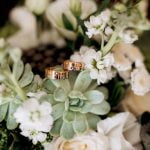Mexican weddings are a vibrant celebration that showcase the rich traditions and customs of the country. From the colorful attire to the symbolic rituals and customs, these weddings offer a unique and enchanting experience. In this article, we will delve into the historical significance of Mexican wedding traditions, the diverse fashion choices ranging from traditional to contemporary, and the profound meaning behind the ceremonies.
Additionally, we will explore the delectable cuisine, lively music and dance, extravagant decorations, bridal party etiquette, and the allure of choosing Mexico as a destination for your dream wedding. Join us on this journey as we embrace the beauty and cultural richness of Mexican weddings – a celebration worth experiencing.
Rich Cultural Heritage
The rich cultural heritage of Mexico is deeply ingrained in every aspect of society, and this is especially true when it comes to weddings. Mexican wedding traditions are not just about celebrating the union of two people, but also about honoring the historical significance and cultural heritage that has been passed down through generations.
One of the most prominent traditions in Mexican weddings is the “lazo” ceremony. This ritual involves the binding of a decorative rope or rosary around the couple’s shoulders in the shape of an “8”. The “lazo” symbolizes the eternal bond between the bride and groom, as well as their commitment to support each other throughout their lives. It is usually performed by the couple’s sponsors or padrinos, who hold this responsibility with great honor.
Another significant tradition in Mexican weddings is the exchange of wedding coins known as “arras”. These coins represent the groom’s promise to provide for his wife and symbolize prosperity and financial unity. The coins are presented to the bride by the groom, usually in a decorative box or tray, during the ceremony. The bride then accepts them and offers them back to her husband as a sign of her trust.
In addition to these symbolic rituals, Mexican weddings also feature various customs that pay homage to Mexico’s history. For example, many couples choose to incorporate traditional indigenous elements such as papel picado (colorful paper flags) or talavera ceramics into their wedding decor. These elements not only add a vibrant touch to the celebration but also serve as a reminder of Mexico’s diverse cultural heritage.
Mexican wedding traditions are a beautiful blend of history, symbolism, and culture. By embracing these customs, couples can create a unique wedding experience that not only celebrates their love but also pays tribute to Mexico’s rich cultural heritage.
- The “lazo” ceremony: symbolizes eternal bond between bride and groom
- The exchange of wedding coins known as “arras”: represents prosperity and financial unity
- Incorporating traditional indigenous elements like papel picado or talavera ceramics into wedding decor
The Colorful Attire
Mexican weddings are known for their vibrant and colorful attire, which reflects the rich cultural heritage of Mexico. From traditional to contemporary fashion choices, Mexican weddings showcase a variety of styles that are both visually stunning and deeply meaningful.
1. Traditional Attire:
In traditional Mexican weddings, the bride often wears a white or off-white dress, symbolizing purity and elegance. However, it is common for brides to incorporate elements of Mexican culture into their attire. This includes embroidered details or lace patterns inspired by traditional Mexican textiles such as the famous Oaxacan embroidery or Puebla’s Talavera ceramics.
Grooms typically wear a charro suit, which is a traditional outfit originating from the Mexican cowboy culture. It consists of tightly tailored pants with silver buttons down the sides, an intricately embroidered jacket, a wide-brimmed sombrero hat, and well-polished boots.
2. Contemporary Fashion:
In recent years, there has been a rise in contemporary fashion choices at Mexican weddings. Many couples opt for a fusion of modern style with traditional elements to create a unique look. Brides may choose to wear a combination of western wedding gowns with hints of Mexican-inspired details such as floral embroidery or colorful accessories like statement earrings or flower crowns.
Grooms also embrace contemporary fashion trends by incorporating elements of formal western suits into their attire while still maintaining some traditional aspects such as wearing specific colors that hold significance in Mexican culture like blue or grey suits with maroon ties.
Mexican wedding guests also play an important role in adding to the overall colorful atmosphere by wearing festive attire. Women often opt for vibrant outfits featuring embroidered maxi dresses called “huipils” or flowy skirts paired with colorful blouses known as “blusas.” Men can be seen wearing traditional guayaberas shirts paired with trousers or shorts.
Overall, whether it is traditional attire steeped in cultural symbolism or contemporary fusions that blend old and new, the colorful attire at Mexican weddings adds to the visual spectacle and highlights the diverse fashion choices that reflect Mexico’s cultural richness.
Symbolic Rituals and Customs
Mexican weddings are known for their rich traditions and customs, making them a unique and unforgettable experience. Symbolic rituals play an essential role in these ceremonies, showcasing the deep-rooted cultural significance of marriage in Mexican society. These rituals hold different meanings and symbolize various aspects of love, commitment, and unity.
Las Arras
One of the most significant customs in a traditional Mexican wedding is the exchange of Las Arras or wedding coins. During this ritual, the groom presents thirteen gold coins to his bride as a symbol of his commitment to provide for her and their future family. The coins represent prosperity and wealth that the couple will share together throughout their lives. The act also signifies the groom’s acknowledgment of his responsibility as a provider for his bride.
La Ceremonia de la Lazo
Another meaningful tradition observed during Mexican weddings is La Ceremonia de la Lazo or the wedding lasso ceremony. This ritual involves placing a decorative rope or cord, often in the shape of an infinity symbol or figure-eight, around the couple’s shoulders in a loop.
The loop represents eternal love and unity between the husband and wife. The lasso is typically made from flowers, crystals, or beads and is chosen by the couple based on personal preferences or cultural significance.
Las Señaladas
Las Señaladas is another symbolic ritual performed during Mexican weddings that represents God’s blessing upon the union of two individuals. Before exchanging vows, it is customary for couples to be blessed with holy water by their parents or godparents. This gesture reinforces their commitment to God’s presence in their marriage and seeks His guidance throughout their journey together.
These symbolic rituals help make Mexican weddings truly special by incorporating elements that highlight unity, love, prosperity, and spirituality. By unraveling the meanings behind these traditions, one can gain a deeper understanding of the cultural richness and beauty of Mexican weddings. Whether one is attending or planning a Mexican wedding, participating in these rituals can create a memorable and meaningful experience for everyone involved.
Traditional Mexican Wedding Cuisine
Mexican cuisine is known for its bold flavors and vibrant colors, and this is no exception when it comes to traditional Mexican wedding cuisine. A Mexican wedding feast is a celebration of rich flavors and diverse ingredients that showcase the country’s culinary heritage. From appetizers to desserts, every dish served at a Mexican wedding is carefully crafted to delight the taste buds and honor the couple’s special day.
One of the most iconic dishes found at a Mexican wedding is mole. Mole is a complex sauce made from a combination of chilies, chocolate, spices, and nuts. It can be served over chicken or turkey, creating a savory and slightly sweet flavor profile that represents the blending of Mexican indigenous and Spanish colonial cuisines.
Another popular dish at Mexican weddings is tamales. Tamales are made from masa dough filled with various ingredients such as meat, cheese, or vegetables. They are then wrapped in corn husks and steamed until tender. Tamales have deep roots in Aztec culture and have been enjoyed at celebrations for centuries.
In addition to these main dishes, there are also a variety of side dishes and desserts that are commonly found at Mexican weddings. These include rice with vegetables (arroz con verduras), stuffed peppers (chiles rellenos), and sweet bread rolls (conchas). For dessert, traditional favorites like flan (caramel custard) and tres leches cake (a sponge cake soaked in three types of milk) are often served.
At any Mexican wedding feast, there will also be drinks to accompany the meal. Traditional options include horchata (a sweet rice drink flavored with cinnamon), agua frescas (fruit-infused water), and tequila or mezcal shots for toasting.
Overall, traditional Mexican wedding cuisine offers a sensory experience that combines diverse flavors with cultural significance. Guests can truly indulge in authentic dishes that represent the rich culinary heritage of Mexico.
| Dish | Description |
|---|---|
| Mole | A complex sauce made from a combination of chilies, chocolate, spices, and nuts; often served over chicken or turkey. |
| Tamales | Masa dough filled with various ingredients such as meat, cheese, or vegetables; wrapped in corn husks and steamed until tender. |
| Arroz con Verduras | Rice with vegetables; often served as a side dish. |
| Chiles Rellenos | Stuffed peppers with meat and cheese filling; usually fried and served with a tomato sauce. |
Music and Dance
Music and dance are an integral part of Mexican culture, and this is especially true when it comes to weddings. From lively mariachi bands to traditional folk dances, the music and dance at Mexican weddings create an atmosphere of joy and celebration that is unmatched.
One of the most iconic musical elements of a Mexican wedding is the mariachi band. Dressed in traditional charro outfits, these musicians play vibrant and upbeat songs on instruments such as guitars, trumpets, violins, and vihuelas. Their performances often include popular Mexican songs like “La Cucaracha” or “Cielito Lindo,” as well as romantic ballads that set the mood for the occasion. The festive sound of mariachi music instantly elevates the energy of the wedding celebration.
In addition to live music, dance also plays a significant role in Mexican weddings. One traditional dance often performed at weddings is called the jarabe tapatío or “Mexican hat dance.” This lively dance involves couples performing intricate footwork while weaving around a sombrero placed on the floor. The choreography is energetic and dynamic, accompanied by the rhythmic clapping and stomping of the dancers’ feet.
Another popular dance at Mexican weddings is known as “el vals” or traditional waltz. This elegant dance showcases the newlywed couple’s first official dance together as husband and wife. The waltz typically begins with slow steps and then transitions into a faster-paced rhythm, allowing everyone to join in on the fun.
| Musical Element | Description |
|---|---|
| Mariachi Band | A group of musicians playing vibrant songs on guitars, trumpets, violins, and vihuelas, adding a festive and lively atmosphere to the wedding celebration. |
| Jarabe Tapatío | A traditional dance performed at Mexican weddings, involving couples performing intricate footwork around a sombrero placed on the floor, accompanied by rhythmic clapping and stomping of feet. |
| El Vals | A traditional waltz dance performed by the newlywed couple as their first official dance together. It starts with slow steps and gradually transitions into a faster-paced rhythm. |
Wedding Décor and Themes
Mexican weddings are known for their vibrant colors and extravagant decorations, which add to the festive atmosphere of the celebration. The wedding décor and themes play a significant role in creating a lively and joyful ambiance that reflects the rich culture and traditions of Mexico.
One of the key elements of Mexican wedding décor is the use of bold and vibrant colors. Traditional Mexican weddings often feature a color palette that includes bright hues such as red, yellow, orange, blue, and green. These colors symbolize love, passion, happiness, and prosperity. In recent years, there has been a rise in contemporary wedding themes that incorporate more muted tones or combine traditional colors with modern elements. However, the vibrancy remains a defining characteristic of Mexican wedding décor.
Another prominent feature of Mexican wedding decorations is the use of natural materials and elements inspired by nature. Flowers are an essential part of Mexican weddings, with couples often choosing native blooms such as marigolds and dahlias for their bouquets and centerpieces.
Papel picado, intricately cut paper banners in various colors and designs, are another common decoration used to adorn outdoor spaces during Mexican weddings. Additionally, cacti and succulents are popular choices for floral arrangements and table décor due to their association with Mexico’s desert landscapes.
Mexican wedding themes often reflect cultural symbols and motifs that hold deep meaning for the couple getting married. Some common theme choices include Dia de los Muertos (Day of the Dead), which embraces vibrant sugar skull designs and colorful papel picado; Huipil-inspired themes that incorporate intricate embroidery patterns found on traditional garments; or even beach-inspired themes given Mexico’s stunning coastlines. These themes allow couples to personalize their wedding while honoring their heritage.
Bridal Party and Guest Etiquette
Mexican weddings are known for their rich cultural heritage and vibrant celebrations. One aspect of these weddings that should not be overlooked is the importance of bridal party and guest etiquette. Understanding the roles, traditions, and expectations at Mexican weddings can help guests fully embrace and appreciate the beauty of these celebrations.
The Bridal Party Roles
In Mexican weddings, the bridal party plays a significant role in the ceremony. The main members of the bridal party include the padrinos and madrinas (godparents) and the damas y chambelanes (bridesmaids and groomsmen).
The godparents have an essential role in sponsoring various aspects of the wedding, such as paying for certain expenses or providing special gifts for the couple. The bridesmaids and groomsmen are responsible for assisting the couple throughout their wedding planning process, as well as participating in various rituals during the ceremony.
Guest Etiquette
When attending a Mexican wedding as a guest, it is important to be familiar with certain etiquette customs. It is customary to arrive at least 30 minutes prior to the start of the ceremony to pay respects to both families before taking your seat. Guests are expected to dress elegantly but modestly, avoiding white attire as it is reserved for the bride. Traditional Mexican weddings may have religious elements; therefore, guests should be prepared to participate respectfully if required.
Gifts and Expectations
When it comes to gift-giving at Mexican weddings, cash is often preferred over physical presents. Monetary gifts are typically presented inside an envelope called a “sobre,” which may include a note with well wishes for the newlyweds.
The amount given depends on several factors such as personal relationship with the couple, financial means, and local customs. It is also common for guests not only to bring gifts for just the couple but also small tokens or favors known as “recuerdos” for other guests in attendance.
Understanding the roles, traditions, and expectations of bridal party members and guests at Mexican weddings is crucial in order to fully participate and show respect during these joyous celebrations. By immersing oneself in the cultural richness of these wedding customs, both the couple and their guests can create lasting memories that embrace the true spirit of Mexico.
Destination Wedding Bliss
Mexico is a popular destination for couples from all around the world who are looking to have a destination wedding. The country’s diverse landscapes, vibrant culture, and rich traditions make it an ideal location for a truly unforgettable wedding experience. From picturesque beach resorts to historical sites and charming colonial cities, Mexico offers a variety of options for couples seeking the perfect backdrop for their special day.
One of the most popular destinations for weddings in Mexico is Cancun. Known for its stunning turquoise waters and white sandy beaches, Cancun provides a tropical paradise setting that is unrivaled.
Couples can exchange vows on the beach with the sound of gentle waves as their backdrop or opt for beachfront venues that offer breathtaking views of the Caribbean Sea. Additionally, Cancun boasts a wide range of luxury resorts that specialize in hosting weddings, ensuring that every detail is taken care of to create a memorable event.
Another sought-after location for destination weddings in Mexico is Los Cabos. Situated at the southern tip of the Baja California Peninsula, Los Cabos offers a unique blend of desert landscapes and pristine beaches.
Many couples choose to tie the knot against the dramatic backdrop of rugged cliffs overlooking the Pacific Ocean or opt for intimate ceremonies under swaying palm trees on secluded beaches. With luxurious resorts, championship golf courses, and world-class spas, Los Cabos provides an idyllic setting not only for weddings but also for a memorable honeymoon experience.
For those who prefer historical charm and colonial architecture, San Miguel de Allende is an enchanting destination for a Mexican wedding. This UNESCO World Heritage site is known for its cobblestone streets lined with colorful buildings and ornate churches that date back centuries. Couples can have their ceremony in one of these historic churches or choose from elegant haciendas and boutique hotels that perfectly capture the romantic atmosphere of this magical town.
Conclusion
In conclusion, Mexican weddings are a truly remarkable celebration that showcases the beauty and cultural richness of Mexico. From its rich historical significance to its colorful attire and symbolic rituals, these weddings offer a unique and unforgettable experience for both the couple and their guests.
One of the most fascinating aspects of Mexican weddings is the incorporation of traditional customs that have been passed down through generations. These customs hold deep meaning and create a sense of unity and connection among family members and loved ones. Whether it’s the exchange of wedding coins symbolizing prosperity or the lasso ceremony signifying eternal love, each ritual adds a special touch to the wedding ceremony.
Furthermore, Mexican weddings are known for their vibrant colors, lively music, and delicious cuisine. The combination of beautiful decorations, traditional music, and mouthwatering dishes creates an atmosphere filled with joy, excitement, and celebration. It truly is an experience like no other.
If you ever have the opportunity to attend a Mexican wedding or even consider having one yourself, I highly recommend embracing this cultural celebration. Not only will you be able to witness firsthand the beauty and richness of Mexican traditions but also create memories that will last a lifetime. Embracing the customs, flavors, music, and vibrant atmosphere of a Mexican wedding is truly an experience worth having.
Frequently Asked Questions
What are the Mexican wedding traditions?
Mexican wedding traditions are rich and deeply rooted in the country’s culture and heritage. One popular tradition is the “lazo” ceremony, where a large, decorated rosary or lasso is placed around the shoulders of the bride and groom to symbolize their unity. The couple wears this throughout the duration of the wedding ceremony.
Another tradition is called “las arras,” where 13 gold coins are exchanged between the bride and groom as a symbol of prosperity and commitment to supporting one another financially. Additionally, traditional Mexican weddings often incorporate vibrant colors, lively music such as mariachi bands, and delicious cuisine like mole and tamales.
Do Mexicans have wedding traditions?
Yes, Mexicans have a wide range of wedding traditions that hold significant importance in their culture. These traditions vary depending on the region and personal preferences, but they generally reflect strong family bonds and religious beliefs.
Mexicans typically have formal church weddings and place great emphasis on the participation of family members in various ceremonies throughout the event. Other common traditions include presentation of gifts known as “padrinos” who sponsor certain aspects of the wedding like rings or flowers, as well as popular dances such as the traditional Mexican dance known as “El Jarabe Tapatio” or “The Mexican Hat Dance.”
Who walks the bride down the aisle in a Mexican wedding?
In a Mexican wedding, it is common for both parents to walk the bride down the aisle rather than just one parent escorting her. This stems from Mexican culture’s emphasis on close-knit families and mutual respect between parents and children.
With both parents accompanying her, it symbolizes their support for her entering into marriage while also acknowledging their continuing involvement in her life even after she becomes a wife. This custom holds sentimental value in recognizing that marriage isn’t solely about two individuals coming together but an extension of two families uniting as well.

Welcome to my blog about home and family. This blog is a place where I will share my thoughts, ideas, and experiences related to these important topics. I am a stay-at-home mom with two young children. I hope you enjoy reading it! and may find some helpful tips and ideas that will make your home and family life even better!





